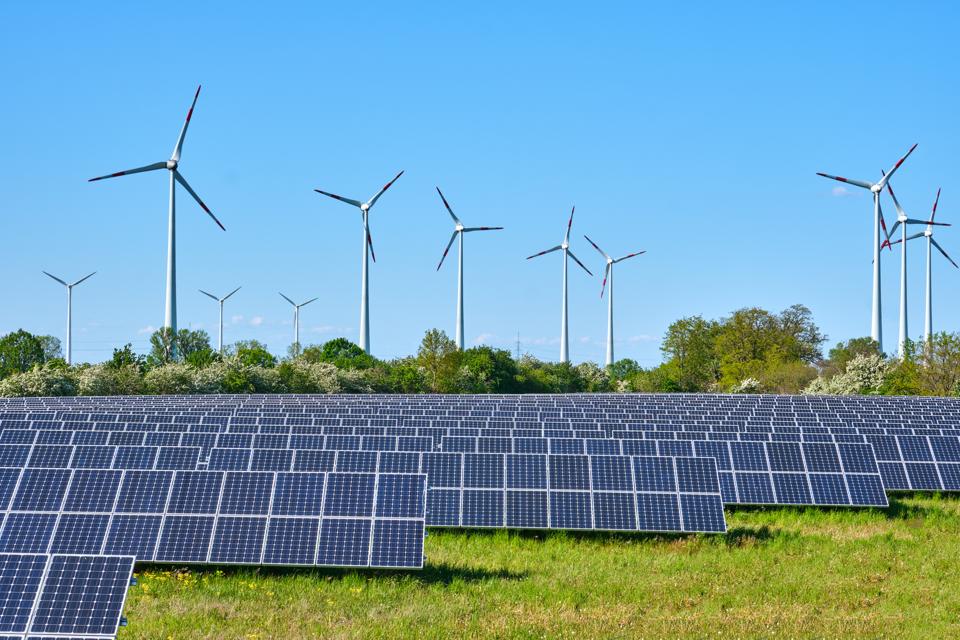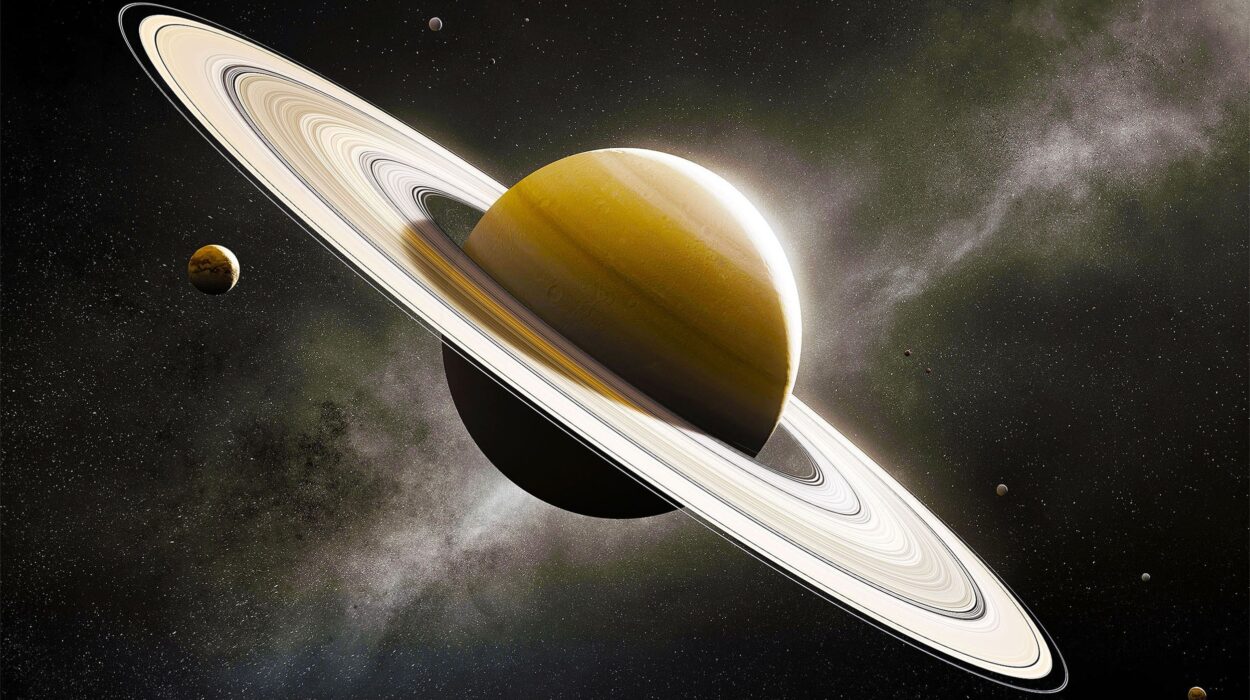Humanity has always been defined by its ability to create. From fire and the wheel to rockets and artificial intelligence, invention has been our greatest strength—and sometimes, our greatest danger. As the planet faces unprecedented environmental challenges—rising temperatures, melting glaciers, plastic-choked oceans, and vanishing species—the question becomes: can technology save us from ourselves?
The answer, perhaps surprisingly, is yes. While technology helped fuel industrial pollution and climate change, it also offers our best chance to heal what’s broken. Across laboratories, startups, and research centers around the world, scientists are developing groundbreaking solutions that could restore ecosystems, cut carbon emissions, and redefine our relationship with nature.
The future is not lost—it’s being built. Here are ten revolutionary technologies that could truly help save the planet.
1. Renewable Energy Revolution – Powering the Future Without Pollution
At the heart of every environmental crisis lies one common factor: energy. For centuries, humans have relied on fossil fuels—coal, oil, and gas—to power our homes, vehicles, and industries. But that dependence has filled the sky with carbon dioxide and turned the planet’s thermostat to dangerous levels.
Renewable energy—solar, wind, hydro, and geothermal—is changing that story. The sun alone delivers more energy to Earth in one hour than humanity uses in an entire year. Capturing just a fraction of that potential could meet global needs indefinitely.
Solar panels have become cheaper, more efficient, and more adaptable. Modern photovoltaic cells can generate power even on cloudy days. Meanwhile, offshore wind farms are harnessing powerful ocean gusts, and new floating turbines are allowing energy generation in deep waters.
But the true revolution lies in energy storage. Advanced batteries, from solid-state lithium to iron-air and flow batteries, are solving the challenge of intermittency—ensuring power flows even when the sun sets or the wind slows.
The shift to renewables isn’t just about cutting emissions; it’s about creating resilience, independence, and equity. In remote villages in Africa, solar microgrids are bringing electricity for the first time. In industrial nations, clean energy jobs are replacing fossil fuel dependency.
The sun, the wind, and the Earth itself are whispering the same message: the power to save the planet is already here.
2. Carbon Capture and Storage – Cleaning the Air We Breathe
Even as we transition to renewables, the carbon already in the atmosphere continues to warm the planet. To reverse that trend, scientists have turned to one of the most ambitious solutions imaginable—directly removing carbon dioxide from the air.
Carbon Capture and Storage (CCS) works by trapping CO₂ from industrial sources or even pulling it straight from the atmosphere. Once captured, it’s compressed and stored deep underground in geological formations or transformed into useful materials.
Direct Air Capture (DAC) facilities, like those built by companies such as Climeworks and Carbon Engineering, use chemical filters to absorb CO₂. These systems can be powered by renewable energy, making the process sustainable.
What makes CCS revolutionary is its potential scale. A single DAC plant could remove tens of thousands of tons of CO₂ each year. Imagine a network of such systems working globally—literally vacuuming the sky clean.
But the technology doesn’t end with storage. Innovative startups are turning captured carbon into building materials, synthetic fuels, and even diamonds. Carbon, once the symbol of pollution, could become the foundation of a circular, green economy.
If we can master the art of pulling carbon from air and turning it into something valuable, we may finally balance the books of our planetary debt.
3. Green Hydrogen – The Fuel of Tomorrow
Hydrogen is the universe’s most abundant element—and possibly the key to a zero-carbon future. When burned or used in a fuel cell, hydrogen produces only one byproduct: water. The challenge, until recently, was how to produce it cleanly.
Most hydrogen today is “grey,” made from fossil fuels in a process that emits CO₂. But “green hydrogen,” created by splitting water molecules using renewable electricity (electrolysis), produces no emissions at all.
Green hydrogen has the potential to decarbonize industries that electricity alone can’t—like steelmaking, cement production, aviation, and shipping. It can also store renewable energy for months, balancing seasonal fluctuations in solar and wind supply.
Countries like Germany, Japan, and Australia are investing billions in hydrogen infrastructure, building pipelines and export hubs. Hydrogen fuel cells are already powering buses, trains, and experimental aircraft.
Imagine a world where cargo ships cross the oceans on hydrogen, factories produce steel without coal, and remote towns generate clean fuel from sunlight and water. That vision isn’t science fiction—it’s within reach.
Green hydrogen could do for the 21st century what oil did for the 20th—but without the cost to the planet.
4. Artificial Intelligence for the Environment – Thinking Our Way to a Greener World
Artificial intelligence is often portrayed as a force that threatens jobs or privacy—but in the right hands, it could be the planet’s most powerful ally. AI can process data faster and more accurately than any human, revealing patterns invisible to the naked eye.
In environmental science, AI is revolutionizing everything from climate modeling to conservation. Satellite data, processed through machine learning algorithms, can predict deforestation before it happens. Drones guided by AI can plant trees with precision, restoring ecosystems faster than human hands ever could.
In agriculture, AI-driven systems analyze soil moisture, weather patterns, and crop health to optimize irrigation and fertilizer use, reducing waste and emissions. In the oceans, AI monitors illegal fishing and tracks endangered species across vast distances.
Even in the energy sector, AI is making grids “smart.” It predicts demand, balances renewable supply, and prevents blackouts.
Perhaps most impressively, AI can accelerate scientific discovery. By simulating chemical reactions and materials, AI helps identify better batteries, efficient catalysts for hydrogen production, and new materials for solar cells.
In a world overwhelmed by data, AI is the interpreter we need—the brain that can turn chaos into clarity, and information into action.
5. Vertical Farming – Growing Food Without Destroying Nature
The global population is expected to reach nearly 10 billion by 2050. Feeding everyone without devastating forests, rivers, and wildlife is one of humanity’s greatest challenges. Vertical farming offers an elegant, high-tech solution.
Instead of sprawling across vast farmlands, vertical farms grow crops in stacked layers inside controlled environments—often in cities, near where people live. Using LED lights, automated irrigation, and nutrient-rich water (hydroponics), these farms can grow vegetables year-round with 90% less water and no pesticides.
Companies like Plenty, AeroFarms, and Infarm are already transforming agriculture. Their facilities produce lettuce, herbs, and strawberries with precision, unaffected by drought, pests, or soil depletion.
The advantages go beyond sustainability. By eliminating transport from rural fields to urban markets, vertical farms slash carbon emissions and food waste. They also offer local food security in a warming world where traditional agriculture is increasingly at risk.
Imagine skyscrapers doubling as green towers, feeding entire neighborhoods. Imagine deserts blooming with indoor crops, nourished by solar energy. Vertical farming isn’t just about growing food—it’s about reimagining the relationship between nature, technology, and humanity.
6. Ocean Cleanup Technologies – Healing the Blue Heart of Earth
The oceans cover more than 70% of our planet, yet they’ve become dumping grounds for plastic and pollutants. Scientists estimate that around 8 million tons of plastic enter the sea every year, harming marine life and even entering the human food chain through microplastics.
But the tide may finally be turning. Around the world, innovators are developing technologies to clean, restore, and protect the oceans.
The Ocean Cleanup, founded by Boyan Slat, has designed massive floating barriers that capture plastic from ocean gyres—those swirling “garbage patches” where debris accumulates. On rivers, smaller systems intercept waste before it ever reaches the sea.
Beyond plastics, scientists are using drones, autonomous submarines, and sensors to monitor coral health, track pollution, and map the ocean floor. Biodegradable materials are replacing fishing nets, and “plastic-eating” enzymes are being engineered to break down waste safely.
Even more futuristic are marine robots that collect data and remove debris simultaneously, powered by solar and wave energy.
The ocean is the planet’s life support system—producing oxygen, absorbing carbon, and regulating climate. These technologies give us a fighting chance to heal the blue heart of the Earth before it’s too late.
7. Smart Grids and Energy Storage – Building the Nervous System of a Green World
Transitioning to renewable energy isn’t just about generating clean power—it’s about managing it intelligently. Traditional energy grids were designed for one-way flow—from power plants to homes. But the future demands two-way, dynamic systems capable of balancing variable inputs from solar panels, wind farms, and even home batteries.
Smart grids use digital communication, sensors, and AI to monitor electricity use in real time. They automatically adjust supply and demand, prevent overloads, and integrate renewable sources efficiently.
Coupled with advanced energy storage—lithium-ion, sodium, flow, and even gravity-based systems—these networks can store excess energy when production is high and release it when needed.
Some communities are already testing “microgrids,” localized systems that operate independently during outages, ensuring resilience during storms or disasters.
Imagine a neighborhood where every home, electric car, and rooftop solar panel is part of a living, breathing energy web—one that thinks, adapts, and sustains itself. Smart grids turn renewable energy from a dream into a dependable reality.
8. Bioengineering and Synthetic Biology – Reinventing Life to Heal the Earth
What if we could engineer organisms to solve environmental problems? Synthetic biology—where living systems are redesigned for specific purposes—is unlocking astonishing possibilities.
Scientists are creating bacteria that eat oil spills, algae that produce biofuels, and crops that capture more carbon. Engineered microbes can remove heavy metals from soil or generate biodegradable plastics from organic waste.
In one groundbreaking project, researchers modified cyanobacteria to convert CO₂ directly into oxygen and biofuel, mimicking the process of photosynthesis more efficiently than nature itself.
Another emerging field is lab-grown meat. By cultivating muscle cells instead of raising livestock, companies are reducing methane emissions, land use, and animal suffering—all while producing real meat.
Synthetic biology walks a fine line between innovation and ethics, but its potential to heal ecosystems and slow climate change is immense. In many ways, it represents humanity learning to work with nature’s code, not against it.
9. Circular Economy and Waste-to-Energy Systems – Ending the Age of Waste
Modern civilization is built on a linear model: take, make, use, and throw away. But nature works differently—everything is recycled, everything has purpose. The circular economy seeks to bring that wisdom back into human systems.
Circular design means creating products that can be repaired, reused, or fully recycled. It also means turning waste into new resources. Waste-to-energy technologies convert organic refuse into heat, electricity, or biofuels through processes like anaerobic digestion and pyrolysis.
In Sweden, entire cities are powered by energy recovered from household waste. In Japan, circular manufacturing systems reuse metals and plastics almost indefinitely.
The potential is staggering. If implemented globally, a circular economy could reduce waste by up to 80%, cut global emissions by half, and create millions of sustainable jobs.
By closing the loop, we don’t just save materials—we save the planet from drowning in its own excess.
10. Space Technology and Earth Observation – Seeing the Planet to Save It
Ironically, one of our best tools for saving Earth lies beyond it. Satellites orbiting the planet are now essential in monitoring its health, tracking everything from deforestation and ice melt to pollution and wildfires.
Space technology gives scientists a bird’s-eye view of change. Programs like NASA’s Earth Observatory and the European Space Agency’s Copernicus track greenhouse gases, ocean temperatures, and land use with astonishing precision.
This data feeds directly into climate models, enabling governments and organizations to act faster and smarter. Farmers can use satellite insights to manage water efficiently, and disaster response teams can predict floods or droughts before they strike.
Meanwhile, companies are developing small, low-cost satellites that can provide continuous monitoring of ecosystems in real time. Even space exploration contributes—technologies developed for Mars rovers and space habitats are inspiring innovations in renewable energy, recycling, and life support systems on Earth.
Space technology reminds us of perspective: when astronauts gaze down at the blue marble below, they see no borders, no divisions—only a fragile, living world that needs protection.
The Promise of a Sustainable Future
Each of these technologies holds enormous promise, but none is a silver bullet. Saving the planet requires not only innovation but also cooperation, compassion, and courage. Technology can provide the tools, but humanity must provide the will.
The challenges are immense, yet so is the ingenuity of our species. From ancient fire to artificial intelligence, we have always found a way forward. The difference now is that the stakes are universal—our shared home, our only home, hangs in the balance.
If we embrace these innovations wisely—guided by ethics, empathy, and a deep respect for nature—we can turn the tide. The story of the future is still being written, and it can be a story not of loss, but of renewal.
The technologies that could save the planet already exist. The question is: will we use them in time?






